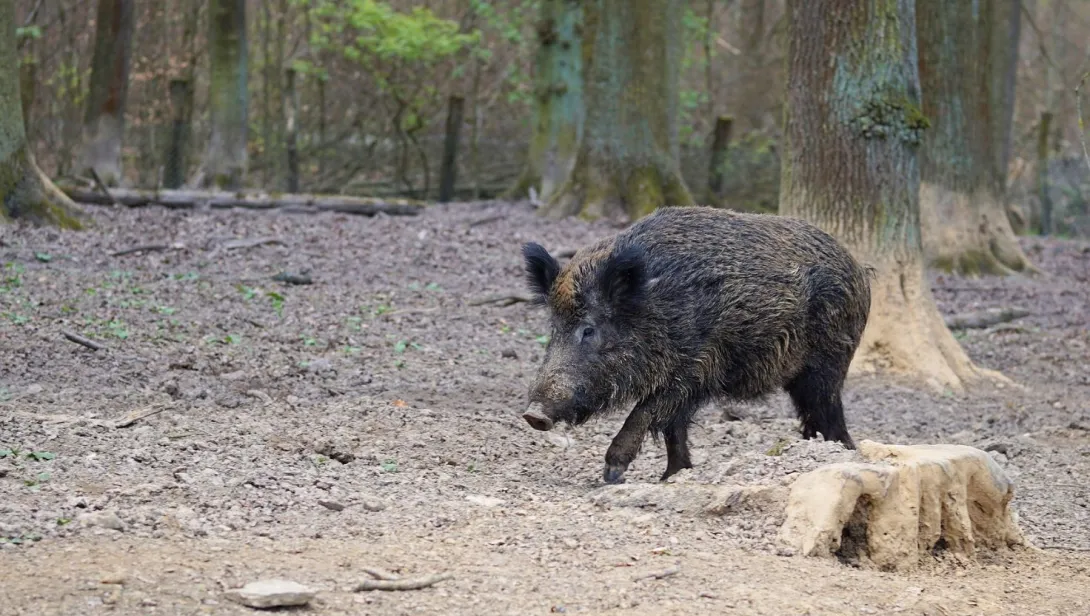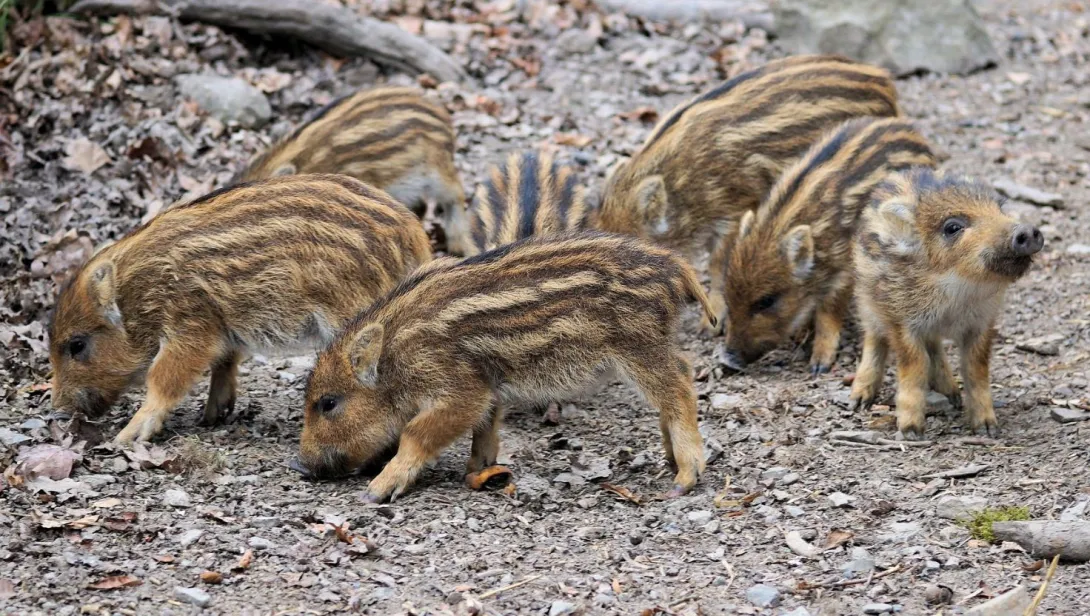Skip to main content
General Information
- The Wild Boar (Sus scrofa) is a species of wild pig native to Europe, Asia, and North Africa.
- It is the ancestor of the domestic pig, which was domesticated thousands of years ago.
- Wild boars are known for their tough and aggressive nature.
- They are highly adaptable and can live in forests, grasslands, wetlands, and agricultural areas.
- Wild boars are considered an invasive species in some regions due to their rapid reproduction and impact on ecosystems.
Physical Characteristics
- Wild boars have a sturdy, muscular body covered with coarse, bristly fur.
- They vary in color from black, brown, and reddish to gray, depending on their habitat.
- Adult males, known as boars, weigh between 75 to 100 kg (165 to 220 lbs), though some can exceed 200 kg (440 lbs).
- Females, called sows, are smaller and weigh around 50 to 80 kg (110 to 175 lbs).
- They have a distinctive elongated snout used for rooting in the ground for food.
- Wild boars have sharp curved tusks that can grow up to 15 cm (6 inches) in males and are used for defense and combat.
Habitat and Adaptation
- Wild boars are found in a variety of habitats, including dense forests, grasslands, wetlands, and agricultural areas.
- They are highly adaptable and can survive in harsh environments, from cold mountains to tropical jungles.
- Their thick fur provides protection against cold temperatures and predators.
- They use their strong snouts to dig for food in the soil.
- Wild boars are mostly nocturnal but may also be active during the day in undisturbed areas.
Diet and Feeding Behavior
- Wild boars are omnivores with a highly varied diet.
- They eat roots, tubers, fruits, nuts, fungi, small animals, eggs, and carrion.
- They are known to raid crops and can cause significant damage to farmland.
- Wild boars use their powerful snouts to dig and forage for underground food.
- They consume a large amount of food daily to sustain their energy-intensive lifestyle.
Social Behavior
- Wild boars live in groups called sounders, which consist mostly of females and their offspring.
- Adult males are typically solitary except during the breeding season.
- They communicate using grunts, squeals, and body language.
- Wild boars are highly intelligent and have good memory and problem-solving skills.
- They have a strong sense of smell and hearing, but their eyesight is relatively poor.
Reproduction and Lifespan
- Wild boars have a high reproductive rate, contributing to their growing populations.
- The breeding season varies by region but typically occurs in the fall and winter.
- After a gestation period of about 115 days, sows give birth to 4 to 6 piglets, though litters can be larger.
- Newborn piglets have striped fur for camouflage, which fades as they grow.
- Wild boars reach sexual maturity at around 1 year of age.
- They have a lifespan of about 10-15 years in the wild, though they may live longer in captivity.
Threats and Conservation
- Wild boars have few natural predators, but young piglets may be hunted by wolves, bears, and big cats.
- In some regions, wild boars are hunted for their meat and tusks.
- They are sometimes culled due to their impact on agriculture and ecosystems.
- Wild boars are resilient and continue to expand their range, even in urban areas.
- In some countries, conservation efforts focus on managing their populations to prevent overpopulation.
Interesting Facts
- Wild boars are one of the most widely distributed mammals in the world.
- They can run at speeds of up to 40 km/h (25 mph) and are excellent swimmers.
- Boars are known for their ferocity and will defend themselves aggressively when threatened.
- Wild boars are an important part of many mythologies and cultures worldwide.
- They are highly intelligent and adaptable, which contributes to their success as a species.

